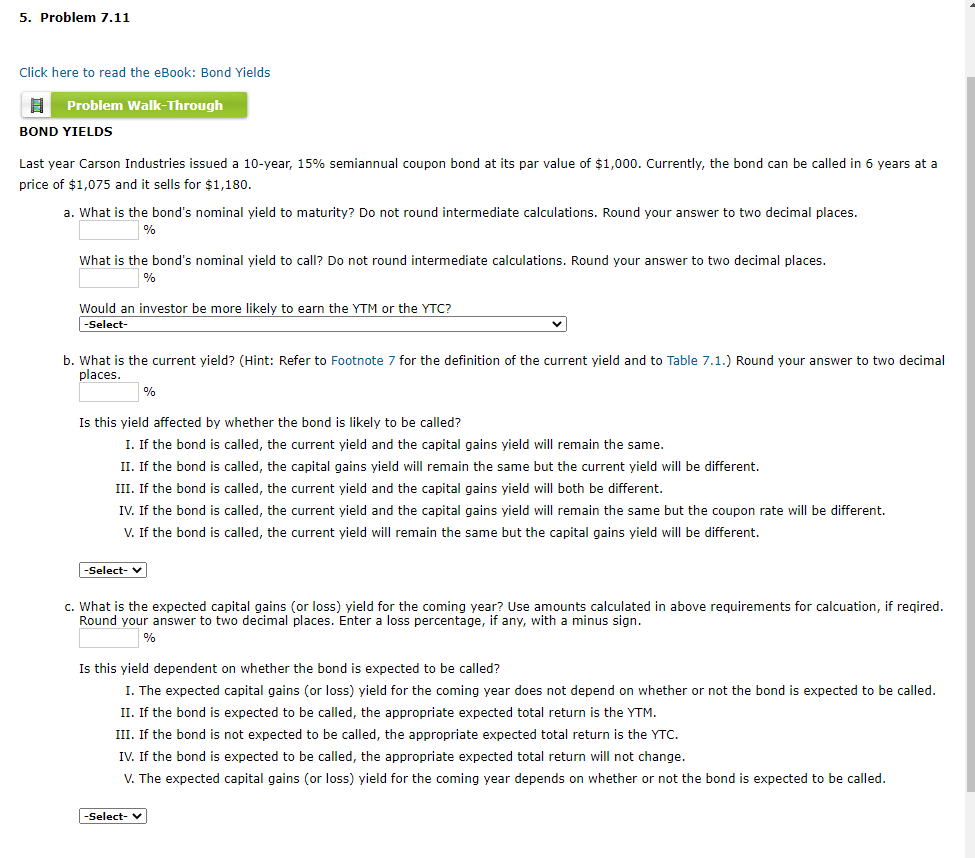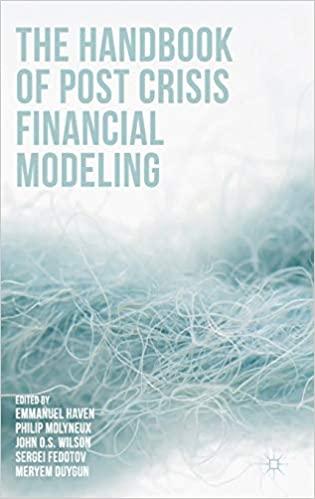I need help with these finance questions ASAP:

5. Problem 7.11 Click here to read the eBook: Bond Yields Problem Walk-Through BOND YIELDS Last year Carson Industries issued a 10-year, 15% semiannual coupon bond at its par value of $1,000. Currently, the bond can be called in 6 years at a price of $1,075 and it sells for $1,180. a. What is the bond's nominal yield to maturity? Do not round intermediate calculations. Round your answer to two decimal places. % What is the bond's nominal yield to call? Do not round intermediate calculations. Round your answer to two decimal places. % Would an investor be more likely to earn the YTM or the YTC? -Select b. What is the current yield? (Hint: Refer to Footnote 7 for the definition of the current yield and to Table 7.1.) Round your answer to two decimal places. Is this yield affected by whether the bond is likely to be called? I. If the bond is called, the current yield and the capital gains yield will remain the same. II. If the bond is called, the capital gains yield will remain the same but the current yield will be different. III. If the bond is called, the current yield and the capital gains yield will both be different. IV. If the bond is called, the current yield and the capital gains yield will remain the same but the coupon rate will be different. V. If the bond is called, the current yield will remain the same but the capital gains yield will be different. -Select- c. What is the expected capital gains (or loss) yield for the coming year? Use amounts calculated in above requirements for calcuation, if reqired. Round your answer to two decimal places. Enter a loss percentage, if any, with minus sign. % Is this yield dependent on whether the bond is expected to be called? I. The expected capital gains (or loss) yield for the coming year does not depend on whether or not the bond is expected to be called. II. If the bond is expected to be called, the appropriate expected total return is the YTM. III. If the bond is not expected to be called, the appropriate expected total return is the YTC. IV. If the bond is expected to be called, the appropriate expected total return will not change. V. The expected capital gains (or loss) yield for the coming year depends on whether or not the bond is expected to be called. -Select







